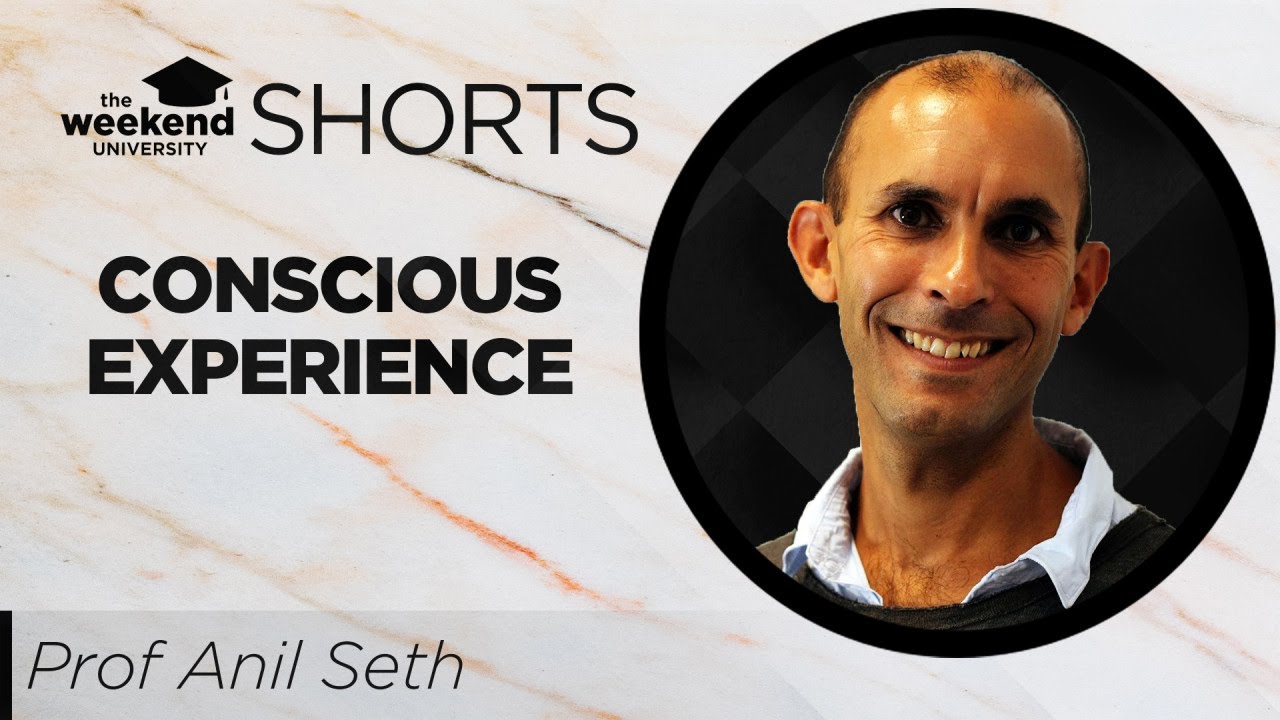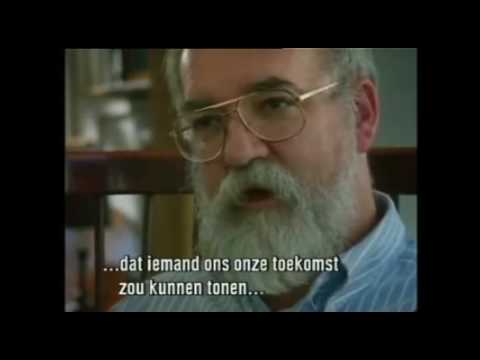The Weekend University
Get early access to our latest psychology lectures: http://bit.ly/new-talks5
Neuroscientific investigation into consciousness and conscious experience has intensified in recent history. Although there is still much to explore, and philosophical considerations still to tesselate, qualitative scientific data has been accumulating in enough quantity to now propose theories of consciousness. In this talk, Anil unpacks some of the underpinning structures which current investigations into consciousness have lineage, and also introduces the subsequent modes of inquiry.
—
Anil Seth is Professor of Cognitive and Computational Neuroscience at the University of Sussex, and the Co-Director of the Sackler Centre for Consciousness Science. He is a Wellcome Trust Engagement Fellow, and a Senior Fellow of the Canadian Institute for Advanced Research. Professor Seth is Editor-in-Chief of Neuroscience of Consciousness, sits on the steering group and advisory board of the Human Mind Project, and was President of the British Science Association Psychology Section in 2017.
He is the co-author of the ‘30 Second Brain’, and contributes regularly to a variety of media including New Scientist, The Guardian, and the BBC. His 2017 TED talk has been viewed more than 9 million times. Professor Seth’s research bridges neuroscience, mathematics, artificial intelligence, computer science, psychology, philosophy and psychiatry. He has also worked extensively with playwrights, dancers and other artists to shape a truly humanistic view of consciousness and self. You can keep up to date with his work at www.anilseth.com.
—
The Weekend University’s mission is to make the best ideas in psychology more accessible to the general public.
To do this, we organise ‘monthly’ lecture days, where attendees get a full day of talks from leading psychologists, authors and university professors.
Get our latest psychology lectures emailed to your inbox: http://bit.ly/new-talks5
Attend a live event: http://bit.ly/weu-events
Source




I am a physicist and I will provide solid arguments that prove that consciousness cannot be generated by the brain (in my youtube channel you can find a video with more detailed explanations). Many argue that consciousness is an emergent property of the brain, but it is possible to show that such hypothesis is inconsistent with our scientific knowledges. In fact, it is possible to show that all the examples of emergent properties consists of concepts used to describe how an external object appear to our conscious mind, and not how it is in itself, which means how the object is independently from our observation.
Let me show this with an example of emergent property, such as the function of a biological organ, like the heart that has the function of pumping blood. Actually, the function of pumping blood is just an abstract concept through which we approximately describe what is really happening, that is billions of linked chemical reactions and moving molecules. In other words, the function of the heart is only a subjective description of the organ from a macroscopic point of view, which neglect many microscopic details. Besides, the concept of pumping is directly connected to the concepts of force and movement, which are fundamental physical properties. Therefore, the function of the heart is not a new real property, but only a conceptual model through which we approximately describe the reality; this means that the function of the heart is just an idea. Emergent properties are ideas conceived to describe or classify, according to arbitrary criteria and from an arbitrary point of view, certain processes or systems; emergent properties are intrinsically subjective, since they are conceptual models based on the arbitrary choice to focus on certain aspects of a system and neglet other aspects, such as microscopic structures and processes; emergent properties consist of ideas through which we describe how the external reality appears to our conscious mind: without a conscious mind, these ideas (= emergent properties) would not exist at all.
Here comes my first argument: arbitrariness, subjectivity, classifications and approximate descriptions, imply the existence of a conscious mind, which can arbitrarily choose a specific point of view and focus on certain aspects while neglecting others. It is obvious that consciousness cannot be considered an emergent property of the physical reality, because consciousenss is a preliminary necessary condition for the existence of any emergent property. We have then a logical contradiction. Nothing which presupposes the existence of consciousness can be used to try to explain the existence of consciousness.
Here comes my second argument: our scientific knowledge shows that brain processes consist of sequences of ordinary elementary physical processes; since consciousness is not a property of ordinary elementary physical processes, then a succession of such processes cannot have cosciousness as a property. In fact we can break down the process and analyze it step by step, and in every step consciousness would be absent, so there would never be any consciousness during the entire sequence of elementary processes. It must be also understood that considering a group of elementary processes together as a whole is an arbitrary choice. In fact, according to the laws of physics, any number of elementary processes is totally equivalent. We could consider a group of one hundred elementary processes or ten thousand elementary processes, or any other number; this choice is arbitrary and not reducible to the laws of physics. However, consciousness is a necessary preliminary condition for the existence of arbitrary choices; therefore consciousness cannot be a property of a sequence of elementary processes as a whole, because such sequence as a whole is only an arbitrary and abstract concept that cannot exist independently of a conscious mind.
Here comes my third argument: It should also be considered that brain processes consist of billions of sequences of elementary processes that take place in different points of the brain; if we attributed to these processes the property of consciousness, we would have to associate with the brain billions of different consciousnesses, that is billions of minds and personalities, each with its own self-awareness and will; this contradicts our direct experience, that is, our awareness of being a single person who is able to control the voluntary movements of his own body with his own will. If cerebral processes are analyzed taking into account the laws of physics, these processes do not identify any unity; this missing unit is the necessarily non-physical element (precisely because it is missing in the brain), the element that interprets the brain processes and generates a unitary conscious state, that is the human mind.
Here comes my forth argument: Consciousness is characterized by the fact that self-awareness is an immediate intuition that cannot be broken down or fragmented into simpler elements. This characteristic of consciousness of presenting itself as a unitary and non-decomposable state, not fragmented into billions of personalities, does not correspond to the quantum description of brain processes, which instead consist of billions of sequences of elementary incoherent quantum processes. When someone claims that consciousness is a property of the brain, they are implicitly considering the brain as a whole, an entity with its own specific properties, other than the properties of the components. From the physical point of view, the brain is not a whole, because its quantum state is not a coherent state, as in the case of entangled systems; the very fact of speaking of "brain" rather than many cells that have different quantum states, is an arbitrary choice. This is an important aspect, because, as I have said, consciousness is a necessary preliminary condition for the existence of arbitrariness. So, if a system can be considered decomposable and considering it as a whole is an arbitrary choice, then it is inconsistent to assume that such a system can have or generate consciousness, since consciousness is a necessary precondition for the existence of any arbitrary choice. In other words, to regard consciousness as a property ofthe brain, we must first define what the brain is, and to do so we must rely only on the laws of physics, without introducing arbitrary notions extraneous to them; if this cannot be done, then it means that every property we attribute to the brain is not reducible to the laws of physics, and therefore such property would be nonphysical. Since the interactions between the quantum particles that make up the brain are ordinary interactions, it is not actually possible to define the brain based solely on the laws of physics. The only way to define the brain is to arbitrarily establish that a certain number of particles belong to it and others do not belong to it, but such arbitrariness is not admissible. In fact, the brain is not physically separated from the other organs of the body, with which it interacts, nor is it physically isolated from the external environment, just as it is not isolated from other brains, since we can communicate with other people, and to do so we use physical means, for example acoustic waves or electromagnetic waves (light). This necessary arbitrariness in defining what the brain is, is sufficient to demonstrate that consciousness is not reducible to the laws of physics. Besides, since the brain is an arbitrary concept, and consciousness is the necessary preliminary condition for the existence of arbitrariness, consciousness cannot be a property of the brain. Based on these considerations, we can exclude that consciousness is generated by brain processes or is an emergent property of the brain. Marco Biagini
It's becoming clearer that with all the brain and consciousness theories out there, the proof will be in the pudding. By this I mean, can any particular theory be used to create a human adult level conscious machine. My bet is on the late Gerald Edelman's Extended Theory of Neuronal Group Selection. The lead group in robotics based on this theory is the Neurorobotics Lab at UC at Irvine. Dr. Edelman distinguished between primary consciousness, which came first in evolution, and that humans share with other conscious animals, and higher order consciousness, which came to only humans with the acquisition of language. A machine with primary consciousness will probably have to come first.
Thank You.
Bless you.
Determinism says go ahead and know your conscience, won't change anything.
I noticed the image @3:13 holds an image of an 8 and the next image the brain split in half @3:31 and stated 88 billion neurons (8+8=16 1+6=7) but then there is the 3 layers of brain of 7 sections and 52 regions supplied by 12 cranial nerves. One should see the numbers used to created a calendar and then there are the 22 bones skull 8 cranial 14 facial but the butterfly bone joins both and a pyramidal bone and this butterfly bone is one of the 7 bones forming a cup holding each eye, an eye that pooled up where you find that pyramidal bone and your ears grew out and the first stage of creation you start out as a 3 layered cake and a candle in the center the call the notochord that pinches off a piece of the top layer that becomes your skin, that little pice that was pinched off becomes the nerves and grows from it the brain and at it's end a set of nuts cupped in what they call a saddle behind the bridge of the nose attached to that butterfly bone and those nuts(or is it eggs) are called the pituitary gland and the worm dreams of flying and becomes the butterfly, the 22 bones divided by the 7 orifices of the head gives you Pi and the center of the split brain is the inner eye the symbol used for Horus and the pupil of this eye another word for student you find a little spinning galaxy your Thoth a spinning little Mercury (88=7) in the salty water coming from the brow like salty sweat of the skin which be the crystal of the eye the light bringer placed there just before the completion of the eye, another piece of skin is pinched off for each eye and turns to crystal. The meaning behind serpent is wisdom and the serpent that slough's his old skin and regenerates new is rebirth and the salty water flowing in the shape of an eye is photo-reactive and the bible you read that your eye be single when opened lights the whole body and in the eye you find 3 types of cones that work pyramidal with the rods of the eye you can call Obelisk. What be between those pyramidal bones called the petrous 'stone like' and holds 100 times more DNA then any other bone, could it be that little spinning galaxy.
Little Galaxy in Your Head https://youtu.be/Tm9QWE8xdX8
Consciousness explained. https://studylib.es/doc/8080182/una-explicación-para-la-conciencia
Hii sir…
How universal mind created.